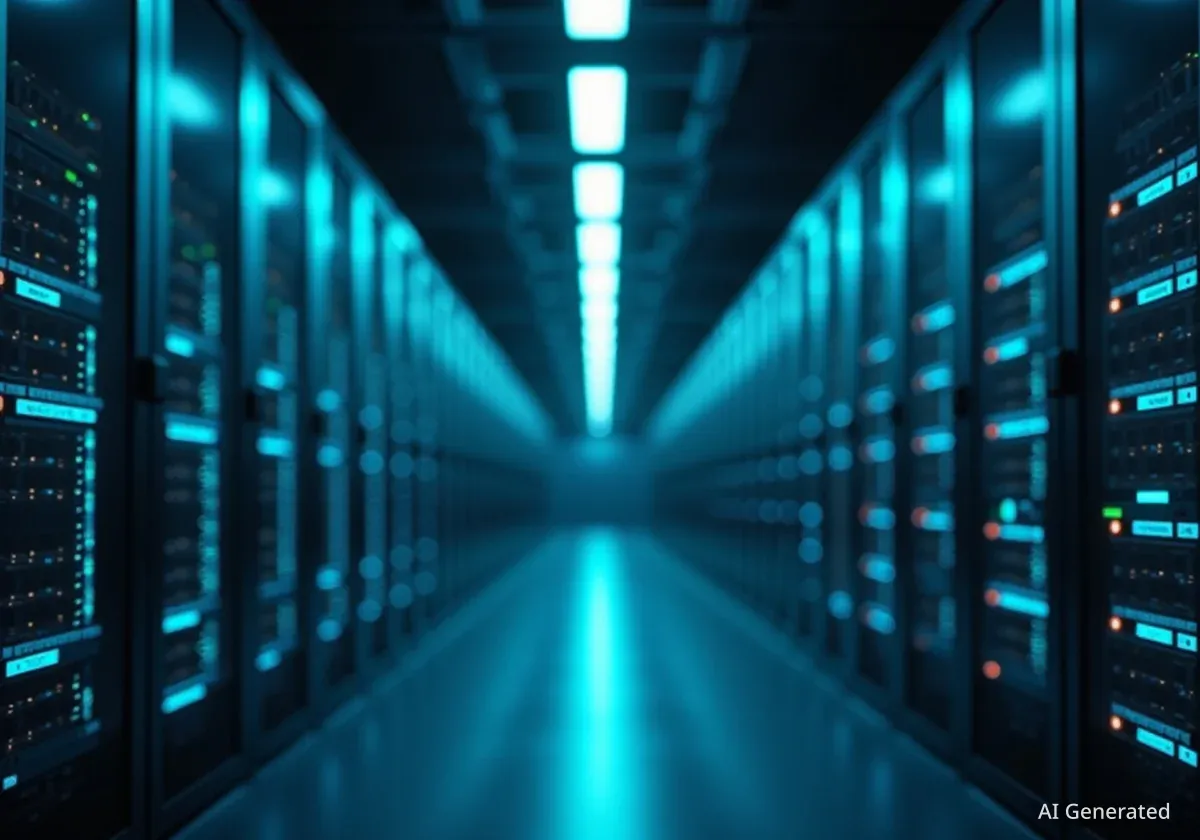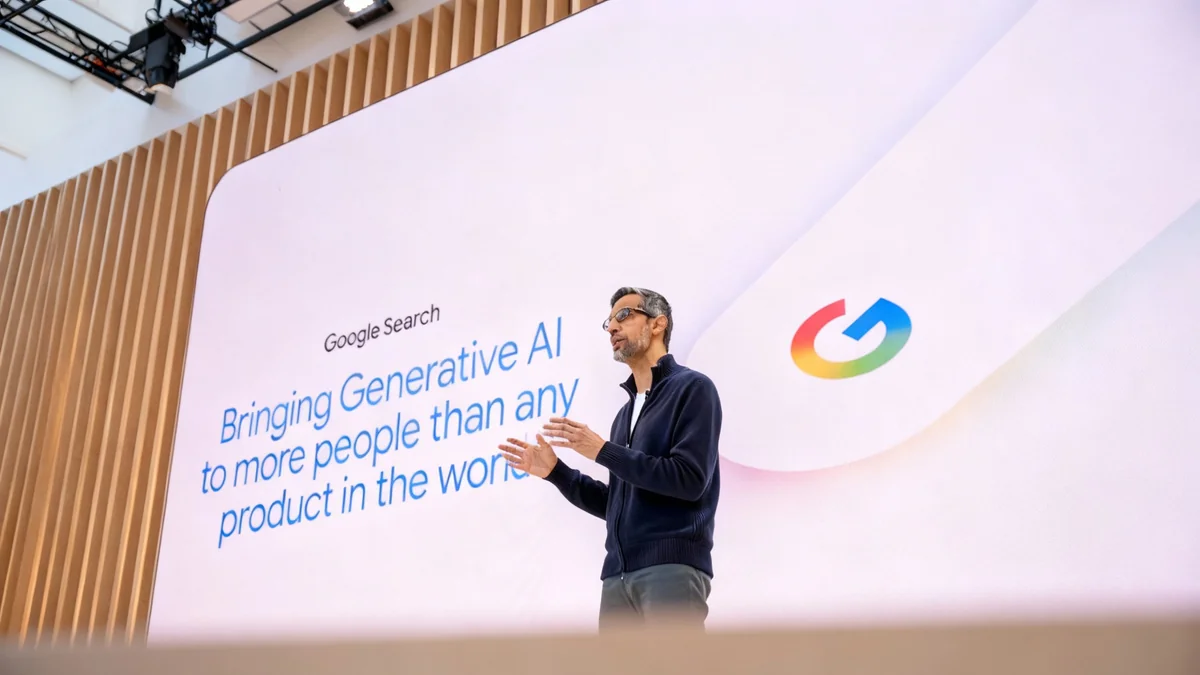Major technology companies are channeling unprecedented sums of capital, estimated to be in the trillions of dollars, into building the physical infrastructure required for advanced artificial intelligence. This massive private investment campaign is focused on constructing vast data centers, securing cutting-edge semiconductors, and developing the power systems needed to support the next generation of AI services.
This strategic push represents one of the largest and fastest private infrastructure expansions in modern history, signaling a fundamental shift in the global economy as companies race to establish dominance in the AI era. The scale of this build-out has significant implications for energy consumption, supply chains, and international competition.
Key Takeaways
- Technology firms are investing trillions of dollars globally to build the physical foundation for artificial intelligence.
- This infrastructure includes massive data centers, specialized AI chips from companies like Nvidia, and extensive power generation resources.
- The investment is driven by intense competition to control the future of AI, from enterprise software to consumer applications.
- The enormous energy and water requirements of AI data centers are creating new challenges for utility grids and environmental sustainability.
- This build-out is also fueling geopolitical competition, particularly between the United States and China over semiconductor technology and supply chains.
The Trillion-Dollar Race for AI Dominance
The world's leading technology companies are engaged in a capital-intensive race to construct the foundational layer for artificial intelligence. This is not just about software; it's a battle being fought with concrete, steel, and silicon. Companies like Microsoft, Google, Amazon, and Meta are allocating budgets that rival the national infrastructure projects of entire countries.
These investments are being directed toward creating a global network of specialized facilities designed to train and operate powerful AI models. The primary goal is to secure a long-term competitive advantage as AI becomes deeply integrated into every aspect of the digital economy.
A New Era of Capital Expenditure
Analysts estimate that the combined capital expenditures of major cloud providers could exceed $200 billion in a single year, with the majority dedicated to AI infrastructure. This level of spending is reshaping supply chains for everything from servers to power transformers.
The urgency of this build-out is fueled by the understanding that the companies with the most computational power will likely lead the development of the most capable and profitable AI systems. This has created a modern-day arms race, where the primary weapons are data centers and processing chips.
Defining the Core Components of AI Infrastructure
The physical backbone of artificial intelligence is complex, requiring a combination of highly specialized technologies working in concert. While the term "cloud" suggests something intangible, the reality is a massive physical footprint on the ground.
Hyperscale Data Centers
At the heart of the AI build-out are hyperscale data centers. These are enormous buildings, often spanning millions of square feet, packed with tens of thousands of computer servers. Unlike traditional data centers, AI facilities are optimized for the immense processing demands of machine learning.
They require sophisticated cooling systems to manage the heat generated by AI chips and vast amounts of electricity to operate. The location of these centers is a strategic decision, often based on access to affordable power, water for cooling, and fiber-optic networks.
The Critical Role of AI Semiconductors
The engines of these data centers are specialized semiconductors known as Graphics Processing Units (GPUs). Companies like Nvidia have become central players in the AI race, as their chips are exceptionally well-suited for the parallel processing required to train large language models.
"Access to a sufficient supply of high-performance GPUs is currently the single biggest bottleneck for AI development. Companies are placing orders years in advance to secure their place in the production queue."
The reliance on a few key chip designers has created intense supply chain pressures. In response, major tech firms are also investing billions to design their own custom AI chips, such as Google's Tensor Processing Units (TPUs) and Amazon's Trainium chips, in an effort to reduce their dependence on third parties and optimize performance.
The Economic and Geopolitical Consequences
This unprecedented infrastructure expansion is creating significant ripple effects across the global economy and altering the landscape of international relations. The concentration of investment is driving economic activity but also raising critical questions about resource allocation and national security.
Historical Parallels
The current AI infrastructure build-out is being compared to other transformative historical projects, such as the construction of the U.S. interstate highway system in the 1950s or the global rollout of telecommunications networks. Each of these created new industries and redefined economic productivity for decades.
Energy Demands and Environmental Impact
One of the most significant challenges is the enormous energy consumption of AI data centers. A single AI query can use substantially more electricity than a traditional web search. According to some projections, the AI industry could account for a notable percentage of global electricity demand within the next decade.
This is forcing tech companies to invest directly in new energy sources, including renewable projects like solar and wind farms. However, the 24/7 power requirement of data centers often necessitates reliance on traditional power sources as well, creating a complex challenge for companies committed to environmental goals.
A New Front in Global Competition
The race for AI infrastructure has become a central element of geopolitical competition, particularly between the United States and China. Control over the semiconductor supply chain is viewed as a matter of national security.
Governments have implemented export controls and provided domestic subsidies to bolster their own chip manufacturing capabilities. This tech rivalry is not just about economic advantage; it's about influencing the future development and deployment of a technology that will have profound societal impacts.
The Future of the AI Build-Out
The current wave of investment is likely just the beginning. As AI models become more complex and their applications more widespread, the demand for computational power will continue to grow exponentially. Companies are already planning for the next generation of data centers, which will be even larger and more power-intensive.
This sustained build-out will continue to reshape labor markets, creating demand for skilled workers in construction, engineering, and data center operations. It will also force societies to confront difficult questions about resource management, environmental sustainability, and the equitable distribution of the benefits generated by artificial intelligence.
The decisions made today by a handful of technology giants will lay the groundwork for the digital world of tomorrow, defining the leaders and followers in the coming age of artificial intelligence.





